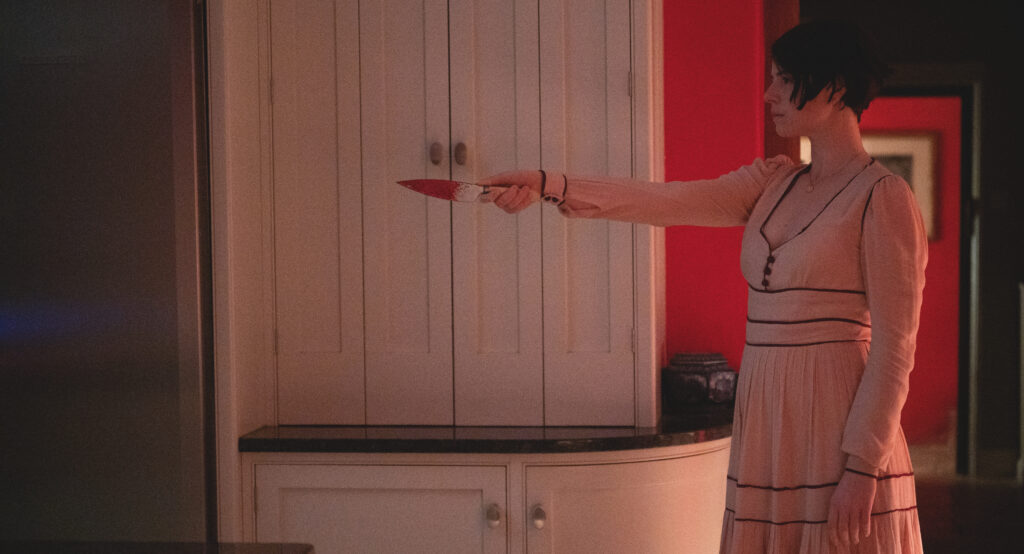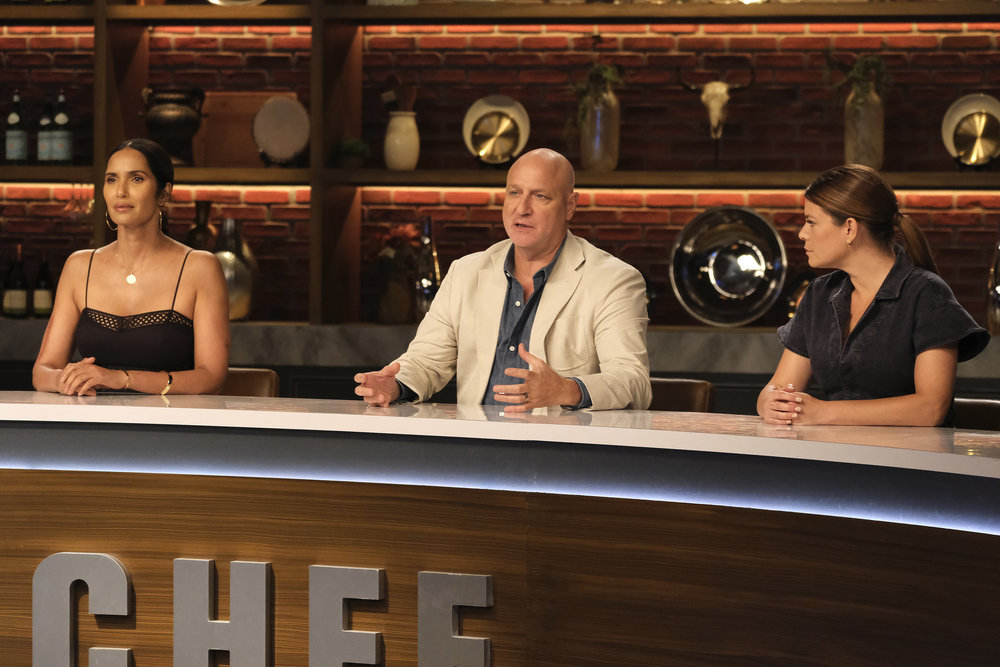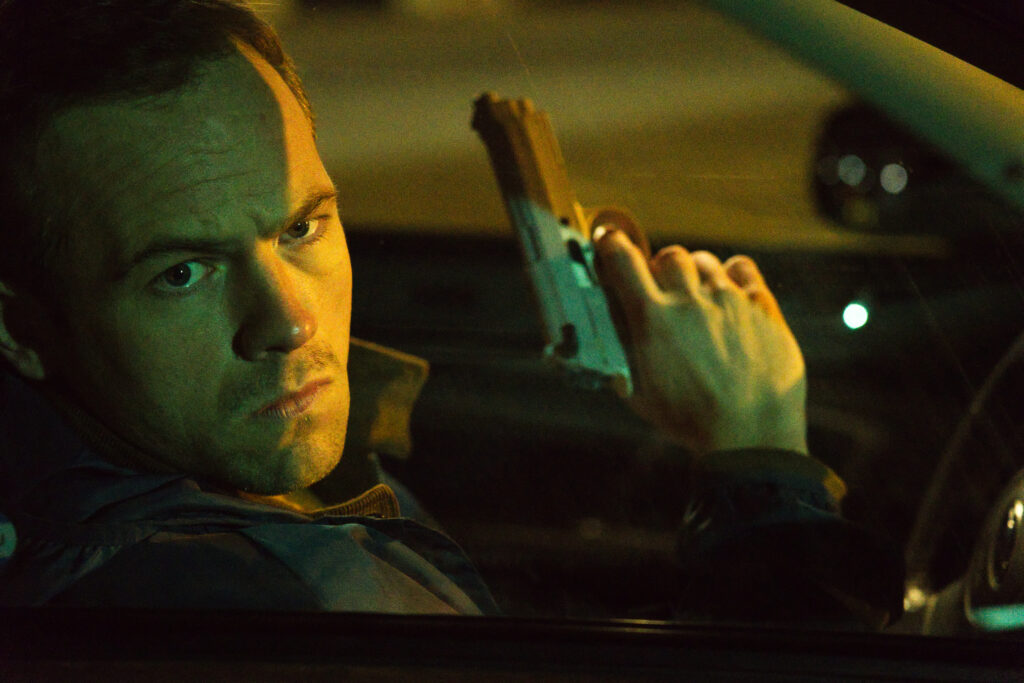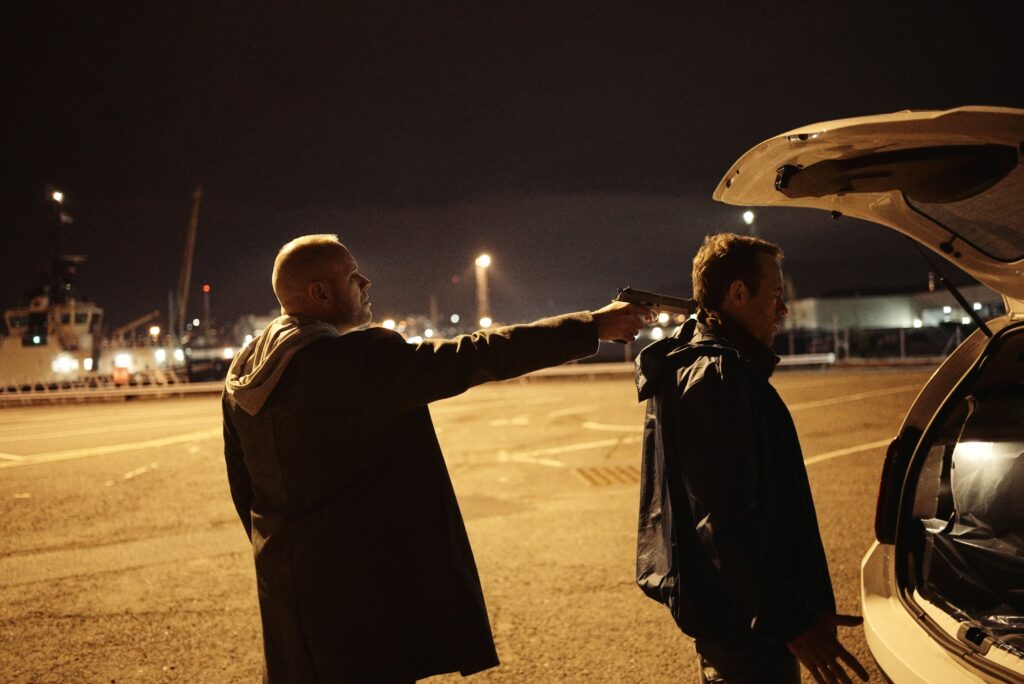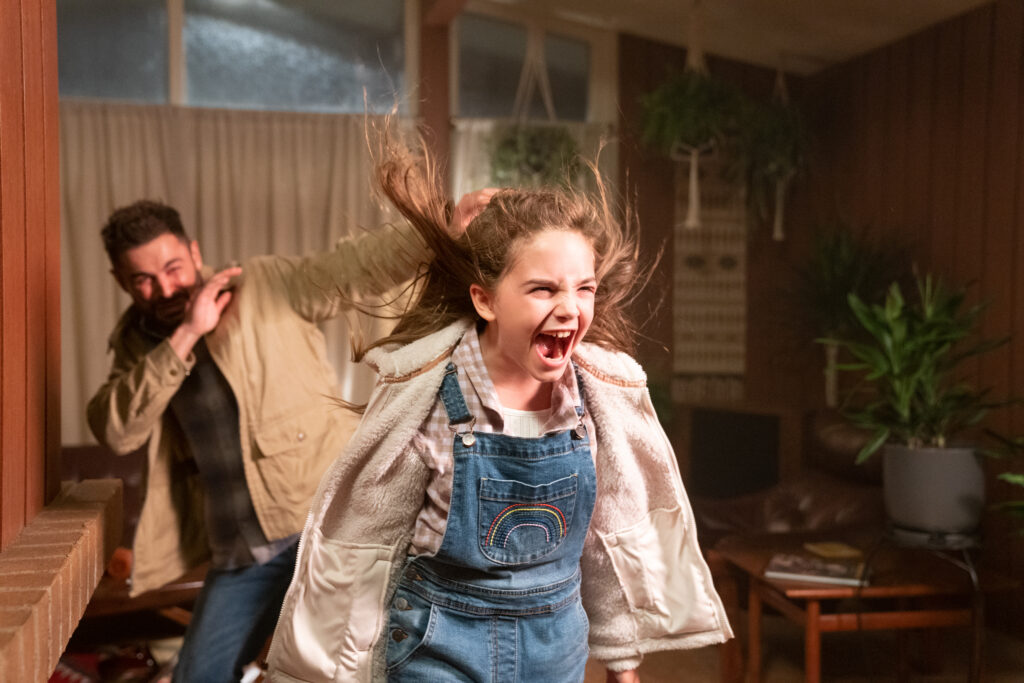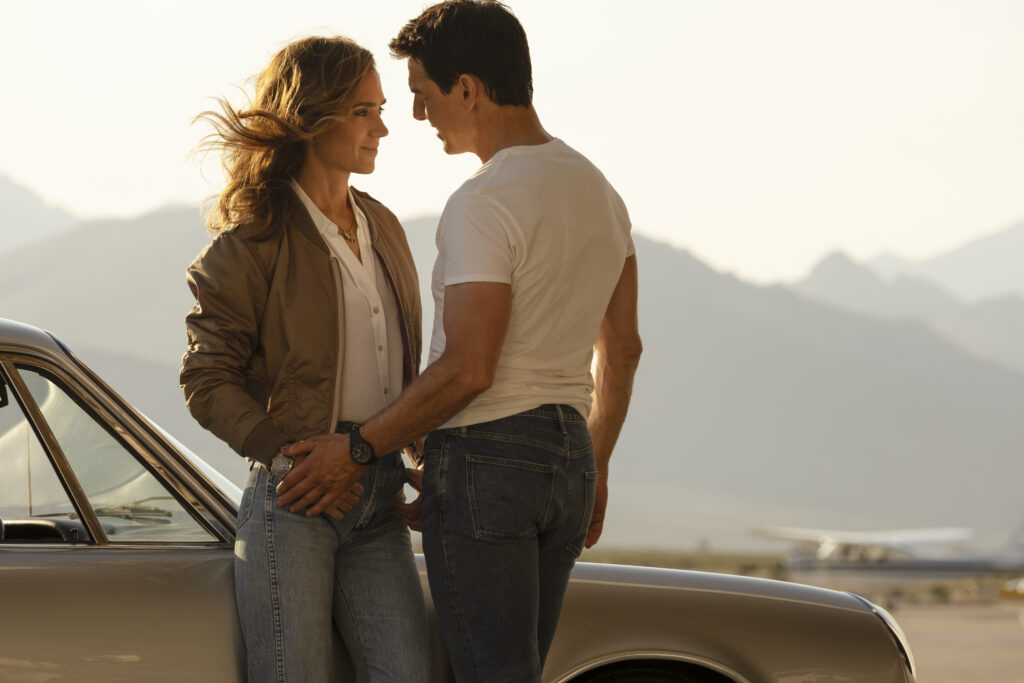May 19, 2022
by Carla Hay
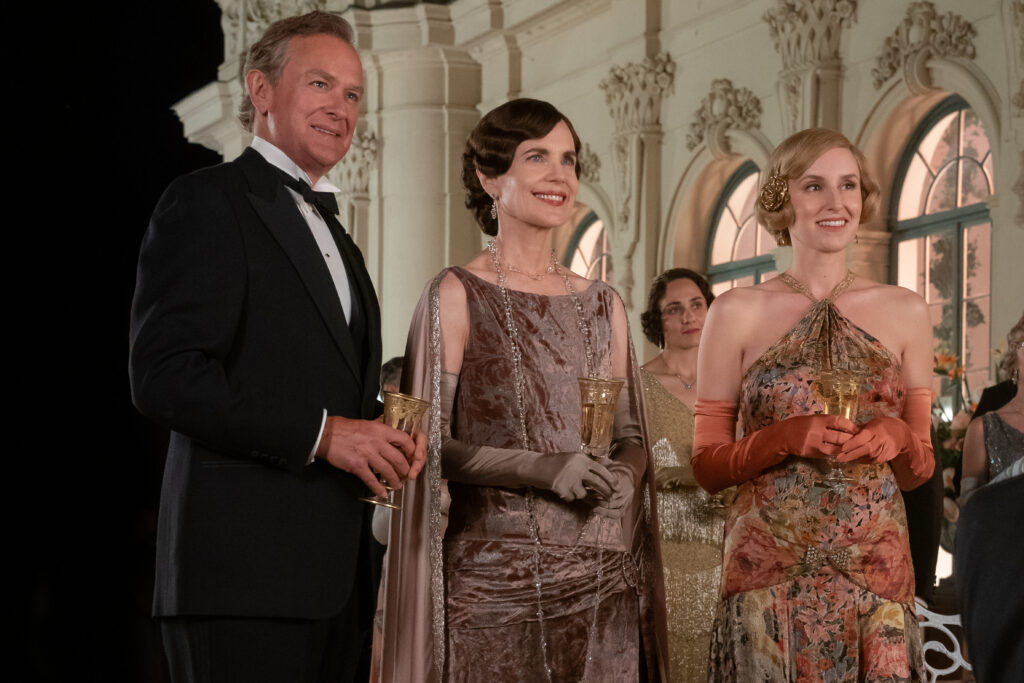
Directed by Simon Curtis
Culture Representation: Taking place in 1928, in the United Kingdom and in France, the dramatic film “Downton Abbey: A New Era” features a nearly all-white cast of characters (with a few black people) representing the working-class, middle-class and wealthy.
Culture Clash: In order to pay for extensive mansion renovations, the wealthy Downton Abbey clan of England reluctantly allows a movie to be filmed at Downton Abbey, while matriarch Violet Crawley finds herself embroiled in a battle over inherited property, health issues, and questions over who really fathered her son Robert Crawley.
Culture Audience: Aside from appealing to “Downton Abbey” fans, “Downton Abbey: A New Era” will appeal primarily to people who are fans of movies about 20th century upper-crust British people and their servants.

“Downton Abbey: A New Era” is more comedic and bolder than its predecessor movie. It takes a less insular view of the world, from the central family’s perspective, thanks to encounters with the 1920s movie industry and a trip to the south of France. The wealthy British clan is impacted when a movie is made on the Downton Abbey estate (located in Yorkshire, England), while members of the Downton Abbey family go to the south of France and learn more about their ancestral history, which might be intertwined with a French aristocratic family.
“Downton Abbey: A New Era” is a sequel to 2019’s “Downton Abbey” movie (directed by Michael Engler), which was in turn a continuation of the British “Downton Abbey” TV series, which was on the air from 2010 to 2015. (In the United States, the award-winning “Downton Abbey” series began airing in 2011.) “Downton Abbey” creator/showrunner/writer Julian Fellowes, who is also the writer of the “Downton Abbey” movies, makes each part of the franchise seamless without making it confusing to viewers who are new to the franchise.
In other words: It’s not necessary to see the “Downton Abbey” TV series (which takes place from 1912 to 1926) and 2019’s “Downton Abbey” movie (which takes place in 1927) before seeing “Downton Abbey: A New Era” (which takes place in 1928), although it is very helpful to see all things “Downton Abbey” before watching this movie sequel. As a bonus, “Downton Abbey: A New Era” has an introduction by Kevin Doyle, who plays valet Joseph Molesley, better known as Mr. Molesley. In this introduction, he catches viewers up to speed by providing a summary of what happened in the 2019 “Downton Abbey” movie. A “Downtown Abbey” TV series recap, although not part of “Downton Abbey: A New Era,” is available online and narrated by cast members Jim Carter and Phyllis Logan, who portray Downton Abbey servants Mr. Carson and Mrs. Hughes.
Directed by Simon Curtis, “Downton Abbey: A New Era” continues with the central family’s preoccupations with class status, royal titles, property ownership and who is (or who should be) the rightful heirs of various inheritances. The “Downton Abbey” franchise, just like much of Fellowes’ work, explores the “upstairs/downstairs” cultures, with the “upstairs” people being the wealthy employers and the “downstairs” people being the employers’ servants. What makes “Downton Abbey: A New Era” stand out from previous “Downton Abbey” storylines is that the “upstairs” and “downstairs” people of Downton Abbey, who usually only deal with British aristocrats, interact with two very different types of cultures: showbiz people and French aristocrats.
Because there are so many characters in the “Downton Abbey” franchise, here’s a handy guide of who’s who in “Downton Abbey: A New Era” and how their relationships affect each other:
The “Upstairs” People
- Violet Crawley (played by Maggie Smith), also known as Violet Grantham (her maiden name) or Dowager Countess of Grantham. Violet is the widowed family matriarch. She is feisty, sarcastic and strong-willed when it comes to deciding the family’s power structure. Violet is the mother of two living children: son Robert and daughter Rosamund. Sir Marmaduke Painswick, one of Violet’s three children, is deceased and was never seen in the series.
- Robert Crawley (played by Hugh Bonneville), 7th Earl of Grantham. Robert is Violet’s only living son. He is generally friendly but also very opinionated on how family matters should be handled.
- Lady Rosamund Painswick (played by Samantha Bond), Violet’s other living child. Lady Rosamund usually defers to her mother and her brother, when it comes to major decisions for the family.
- Cora Crawley (played by Elizabeth McGovern), the Countess of Grantham. She is Robert’s kind, patient and dutiful wife. Robert and Cora are the parents of three daughters, one of whom is deceased.
- Lady Mary Josephine Talbot (played by Michelle Dockery), previously known as Mary Crawley. Fair-minded and even-tempered, she is the eldest of Robert and Cora’s three daughters. In the “Downton Abbey” movie, Violet put Mary in charge of all Downton Abbey management decisions, but Mary struggles with having confidence in deciding what is best for Downton Abbey and the family. Mary experienced tragedy with the 1921 death of her first husband Matthew Crawley (played by Dan Stevens), who was a distant cousin. Matthew died in a car accident shortly after Mary gave birth to their son George Crawley (played by twins Oliver Barker and Zac Barker), born in 1921. In 1925, Mary wed her second husband Henry Talbot (played by Matthew Goode), who is not seen in “Downton Abbey: A New Era.” Henry is dashing and charming but often inattentive to his family because he frequently travels to attend car racing matches around the world. Mary says of Henry: “He’s in love with cars, speed and adventure.” Mary and Henry have a daughter together named Caroline Talbot (played by twins Bibi Burr and Olive Burr), who was born in 1926.
- Lady Edith Pelham (played by Laura Carmichael), previously known as Edith Crawley), Marchioness of Hexham. She is the middle daughter of Robert and Cora. Edith is happily married and has been mainly preoccupied with raising children, after previous issues with conceiving. She is a journalist who still wants to continue her dream of owning and managing her own magazine. In late 1922 or early 1923, Edith gave birth to her daughter Marigold (played by twins Eva Samms and Karina Samms), whose biological father was The Sketch magazine editor Michael Gregson (played by Charles Edwards), whom Edith met when she wrote for the magazine. Edith and Michael were never married because he could not divorce his mentally ill wife. Michael died in 1923, during the Beer Hall Putch in Germany.
- Herbert “Bertie” Pelham (played by Harry Hadden-Paton), 7th Marquess of Hexham, an amiable real-estate agent/military man. He is Edith’s second husband and the stepfather of Marigold. Bertie and Edith, who were wed on New Year’s Eve 1925, have a biological son together named Peter, who was born in 1927 or 1928.
- Tom Branson (played by Allen Leech), an Irishman who used to be the Downton Abbey chauffeur, but he became part of the family when he married Sybil Crawley (played by Jessica Brown Findlay), Robert and Cora’s youngest daughter, who died from childbirth complications in 1920. Tom and Sybil’s daughter, born in 1920, is named Sybil “Sybbie” Branson (played by Fifi Hart).
- Lucy Branson (played by Tuppence Middleton), Tom’s second wife, whom he began courting in the first “Downton Abbey” movie. Lucy is a former maid and formerly secret illegitimate daughter of Maud Bagshaw, who is a wealthy distant relative of the Crawleys. Maud has made Lucy the heir to Maud’s entire fortune. “Downton Abbey: A New Era” opens with the wedding of Tom and Lucy.
- Maud Bagshaw (played by Imelda Staunton) is a steely socialite who has had a longstanding feud with Violet, because Violet thinks Maud should have made Violet son’s Robert the heir to Maud’s fortune, since Maud has no sons of her own. This feud reached a temporary halt when Lucy and Tom got married, since this marriage puts the Crawleys in close proximity to Lucy’s inheritance, because Robert’s granddaughter Sybbie is now Lucy’s stepdaughter.
- Isobel Merton (played by Penelope Wilton), the droll-talking mother of the late Matthew Crawley. Isobel frequently trades sardonic barbs with Violet.
- Lord Merton (played by Douglas Reith), Isobel’s laid-back second husband. He is usually a bystander in the family drama.
The “Downstairs” People
- Thomas Barrow (played by Robert James-Collier), the Downton Abbey butler. He is somewhat rigid and uptight but not afraid to stand up for himself if he feels that he is being disrespected. Thomas is also a semi-closeted gay man. Only a few trusted people at Downton Abbey know about his true sexuality.
- Daisy Parker (played by Sophie McShera), a Downton Abbey kitchen maid. She has a fun-loving and energetic personality. Daisy suffered a tragedy when her first husband William Mason (Thomas Howes), a second footman for the Downton Abbey family, died from World War I combat wounds.
- Andy Parker (played by Michael Fox), the Downton Abbey second footman. Daisy and Andy fell in love and got married circa 1928. Andy is prone to get jealous and insecure, but Daisy likes that Andy is willing to go to extremes for their love.
- Mr. Carson (played by Jim Carter), the on-again/off-again Downton Abbey butler. As the most experienced butler at Downton, he often sees himself as the unofficial leader of the staff, whether they want his advice or not.
- Mrs. Hughes (played by Phyllis Logan), the Downtown Abbey head housekeeper, who is prim, proper, and frequently involved in keeping secrets to prevent Downton Abbey from being embroiled in scandals.
- Mrs. Patmore (played by Lesley Nicol), the Downton Abbey chief cook. She has a no-nonsense attitude that keeps the other kitchen staff in check.
- Mr. Bates (played by Brendan Coyle), the Downton Abbey valet. His arrogance sometimes alienates other members of the staff.
- Anna Bates (played by Joanne Froggatt), wife of Mr. Bates and the maid to Lady Mary. She is generally well-liked but sometimes gets caught up in the Downton Abbey gossip.
- Mr. Molesley, the aforementioned Downton Abbey valet who has a tendency to bumble and be socially awkward.
- Phyllis Baxter (played by Raquel Cassidy), the lady’s maid for the Countess of Grantham. Phyllis and Mr. Molesley become each other’s love interest. “Downton Abbey: The Next Era” shows how far this romance goes.
The Newcomers
- Jack Barber (played by Hugh Dancy), the director and producer of “The Gambler,” a drama film, set in 1875, about a seductive gambler who’s a con man and a heartbreaker.
- Guy Dexter (played by Dominic West), the male titular star of “The Gambler.” Guy is charismatic, flirtatious, and might be secretly attracted to Barrow, the Downton Abbey butler.
- Myrna Dalgleish (played by Laura Haddock), the female star of “The Gambler.” Myrna comes from a working-class background and has a thick Cockney accent. She is very conceited and rude to almost everyone.
- Mr. Stubbins (played by Alex Macqueen), the sound engineer for “The Gambler.”
- Montmirail (played by Jonathan Zaccaï), a French marquis from a wealthy family.
- Madame de Montmirail (played by Nathalie Baye), Montmirail’s mistrusting mother.
It’s a lot of characters to take in for one movie, which is why viewers who know at least some basic “Downton Abbey” background will enjoy “Downton Abbey: A New Era” the most. “Downton Abbey: A New Era” also has two main storylines:
(1) British Lion Film Corp. Ltd. asks to film “The Gambler” at Downton Abbey for one month. Some members of the family think it would be crass and tacky to allow a movie to be made at their home, but Mary ultimately decides that the family could use the money to do extensive renovations at Downton Abbey, including the roof that has been leaking for years. After all, why use the family money for this refurbishing when it can be paid for by a movie studio?
“The Gambler” was originally going to be a silent film. However, the movie studio shuts down production of “The Gambler” because talking pictures are becoming popular. Mary comes up with the idea to make “The Gambler” a talking picture by dubbing in the audio with a separate recording.
However, Myrna’s speaking voice is considered too “low-class” and unacceptable for the role, and she says her lines of dialogue in a stiff and unnatural manner. A reluctant Mary is then recruited to be the speaking voice for Myrna’s character in “The Gambler.” Myrna predictably gets jealous. Most of the comedic scenes in “Downton Abbey: A New Era” revolve around the making of “The Gambler.”
(2) Violet finds out that she inherited a villa in the south of France from Montmirail’s marquis father, whom Violet spent just a few days with when she traveled to France as a young woman. This Montmirail widow is contesting this will and is threatening to take legal action against Violet. Robert, Cora, Edith, Bertie, Tom and Lucy all travel to France to meet the Montmirail widow and her son, to settle this matter, and to see the villa. Meanwhile, speculation abounds over why Violet got the inheritance. Was it because she and the marquis were secret lovers? Meanwhile, Violet is dealing with health issues that were mentioned in the first “Downton Abbey” movie.
“Downton Abbey: A New Era” keeps much of the snappy dialogue that’s characteristic of the “Downton Abbey” franchise, while the movie’s screenplay still maintains an air of intrigue and mystery of how the story is going to go. (Needless to say, the movie’s cinematography and production design are gorgeous.) And all of the cast members play their roles with considerable aplomb.
Violet, as usual, gets the best zingers. She’s one of the Crawley family members who is appalled that showbiz people have populated Downton Abbey to film “The Gambler.” Violet is particularly unimpressed with Myrna. Violet quips about Myrna: “She has all the charm of a verruca.” Violet also finds movies to be an uncultured form of entertainment. “I’d rather eat pebbles,” she says about watching movies.
If watching a film about stuffy British people and their servants isn’t something that you don’t want to spend two hours of your time doing, then anything to do with “Downton Abbey” is not for you. But if you want to see an intriguing and multilayered story about the dynamics between a complicated family, then “Downton Abbey: A New Era” is worth your time, especially if you know about who these characters are before watching the movie.
Focus Features will release “Downton Abbey: A New Era” in U.S. cinemas on May 20, 2022. The movie was released in the United Kingdom on April 29, 2022.

